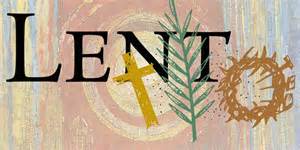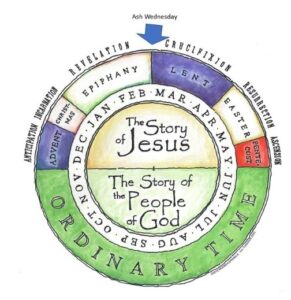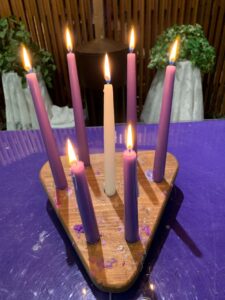A Time Called…Lent

Lent is the 40 day period of time between Ash Wednesday and Easter Saturday. In some traditions, it is seen as a time of sacrifice and focus on personal guilt (“giving up” things for Lent). But, Lent can also reveal the great blessings of being a Christian, by offering us a time set aside for both looking inward at our faith as well as opportunities to grow as a community in our faith.
Ash Wednesday is the first day of the season of Lent, and occurs six and a half weeks before Easter. It is a solemn reminder of human mortality and the need for reconciliation with God. In many denominations it is observed with ashes and fasting.
History of Ash Wednesday
In the early Christian church, the length of the Lenten celebration varied, but eventually it began 6 weeks (42 days) before Easter. This provided only 36 days of fasting (excluding Sundays). In the 7th century, 4 days were added before the first Sunday in Lent in order to establish 40 fasting days, in imitation of Jesus Christ’s fast in the desert.
The day before Ash Wednesday became known as Shrove Tuesday, as, traditionally during Lent, Christians would give up rich, tasty foods such as butter, eggs, sugar and fat. Shrove Tuesday was the last chance to eat them – and what better way to do so than with a delicious pancake! Shrove Tuesday is also known as Pancake Tuesday, as it became a traditional custom to eat pancakes as a meal. Elsewhere, the day has also been called “Mardi Gras”, meaning “Fat Tuesday.” The word shrove is a form of the English word shrive, which means to obtain absolution for one’s sins by way of Confession and doing penance. Shrove Tuesday was named after the custom of Christians to be “shriven” before the start of Lent.
It was the practice in Rome for penitents and grievous sinners to begin their period of public penance on the first day of Lent. They were sprinkled with ashes, dressed in sackcloth, and obliged to remain apart until they were reconciled with the Christian community on Maundy Thursday, the Thursday before Easter. When these practices fell into disuse in the 8th–10th centuries, the beginning of the season of Lent was symbolized by placing ashes on the heads of the entire congregation, using ashes from the burning of palms used on the previous year’s Palm Sunday, in the shape of a cross.
As we are doing an online service this year, we will not be doing the imposition of ashes. However, the Ash Wednesday service continues to serve as a reminder to focus our attention on the Lenten season and remains an important start to the Lenten journey. Please watch for our online service to be posted on Wednesday, February 14.

Historical Roots of Lent
In the early church, Lent was a time of training and preparation for baptismal candidates at Easter. By the fourth century, it developed into a 40-day period, following the biblical pattern of 40 days or 40 years of preparation and anticipation. In its early form, elements of penitence were included. Lent, in our tradition, is a time to re-examine and reaffirm our identity as people baptized into Christ’s body, the church.
Finding Meaning in the Tradition
Our baptism is a symbolic dying and rising with Christ. During Lent, we move with Christ towards these events in his life. Along the way the Spirit gives the opportunity for us to redirect and refocus our lives, and more fully realize our Christian identity. We recall where we are going and what it cost God for us to become resurrection people. We become open to the possibilities of new beginnings all around us. The season of Lent points us to Easter. The liturgical colour for the season is purple. It is a cool colour on the colour wheel, reflecting divinity, wisdom, dignity, mystery, and creativity. Dark purple is a penitential colour, evoking sadness and deep reflection. 
During the season of Lent we will be using the Lenten Triad, consisting of 6 purple candles for the 6 weeks of Lent, with a white candle in the middle, representing Christ.
Each Sunday, one candle will be snuffed out. On Good Friday, when we remember Christ’s death on the cross, we will extinguish the white candle, leaving darkness until Easter morning when we celebrate the resurrection.


You must be logged in to post a comment.